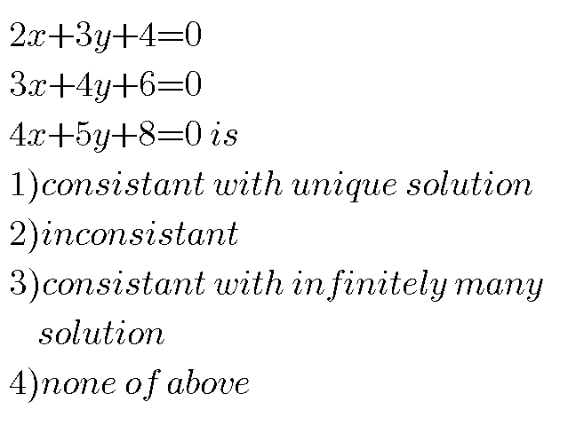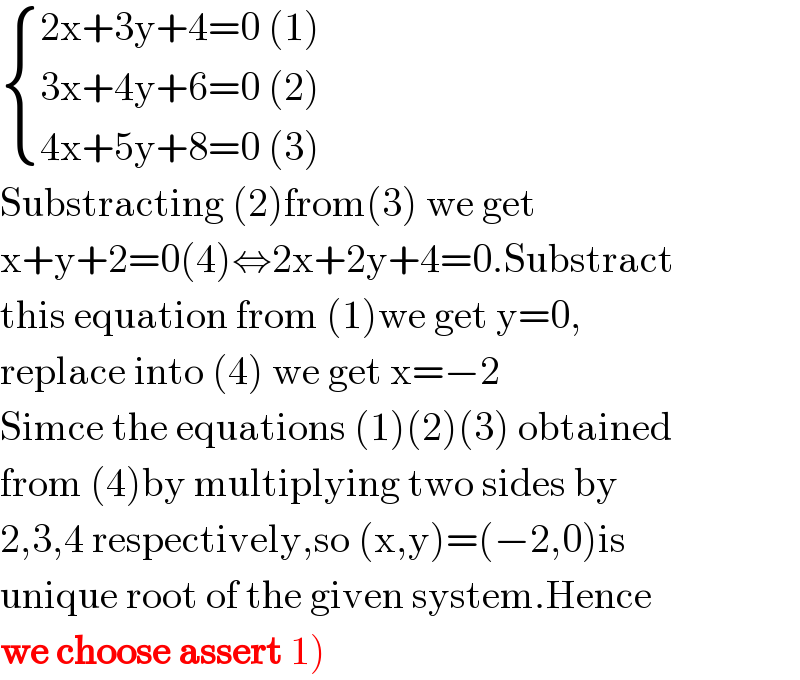
Question and Answers Forum
Previous in Matrices and Determinants Next in Matrices and Determinants
Question Number 118640 by 281981 last updated on 18/Oct/20

Answered by MJS_new last updated on 19/Oct/20

Answered by 1549442205PVT last updated on 19/Oct/20

